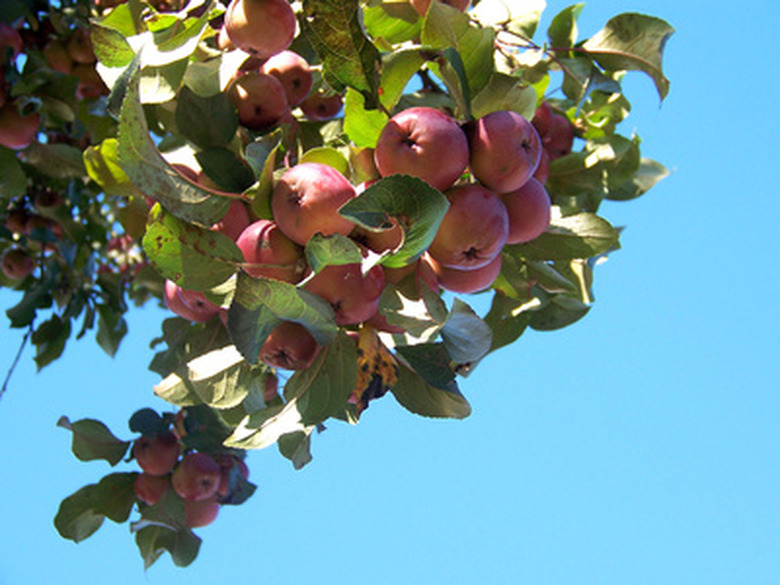What Are The Best Fruit Trees For Zone 9?
USDA Zone 9 fruit trees grow in subtropical and hot climates with very warm summers and mild winters. St. Augustine, Florida, and Houston, Texas, are part of Zone 9. The coldest temperatures for this particular zone should not fall below 20 degrees Fahrenheit. The best fruit trees for this zone tolerate heat and drought conditions.
Kieffer Pear
The fast-growing Kieffer pear tree is the most popular pear tree that produces large fruit. The pear tree thrives in USDA Zones 4 to 9. The pear tree needs full sun to grow to a mature height of 15 to 25 feet. The tree tolerates drought and adapts to many soil conditions, but prefers well drained, slightly moist soil. Ripe fruit is ready to pick in late September to early October. The fruit has a course texture with juicy white flesh.
Santa Rosa Plum
The Santa Rosa plum tree takes up very little room and adapts to many different conditions. The plum tree grows in Zone 5 to 10. The Santa Rosa needs full sun to grow to maturity at 10 to 20 feet tall. The tree adapts to any soil condition, but prefers well-drained, sandy to clay soil. It can handle a fair amount of drought periods. Fruit appears in June and is ready to pick in August.
Surecrop Nectarine
The fast-growing Surecrop nectarine is ideal for small places and grows 12 to15 feet high. The nectarine tree will do well in Zones 5 to 9. Surecrop nectarine fruit trees need full sun and adapt to different soil conditions. The tree tolerates drought. In early spring, the tree produces pink flowers. Fruit is ready to harvest in mid-August.
Red Fuji Apple Trees
The Red Fuji apple tree is fast-growing and the fruit ripens quickly. The apple tree grows in USDA Zones 6 to 9 with partial to full sun in any soil. The tree grows to heights of 10 to 15 feet and tolerates drought conditions well. The apples are ready to pick in October. Red Fuji apples are good for baking and eating. The apple is red with a whitish/yellowish flesh.
